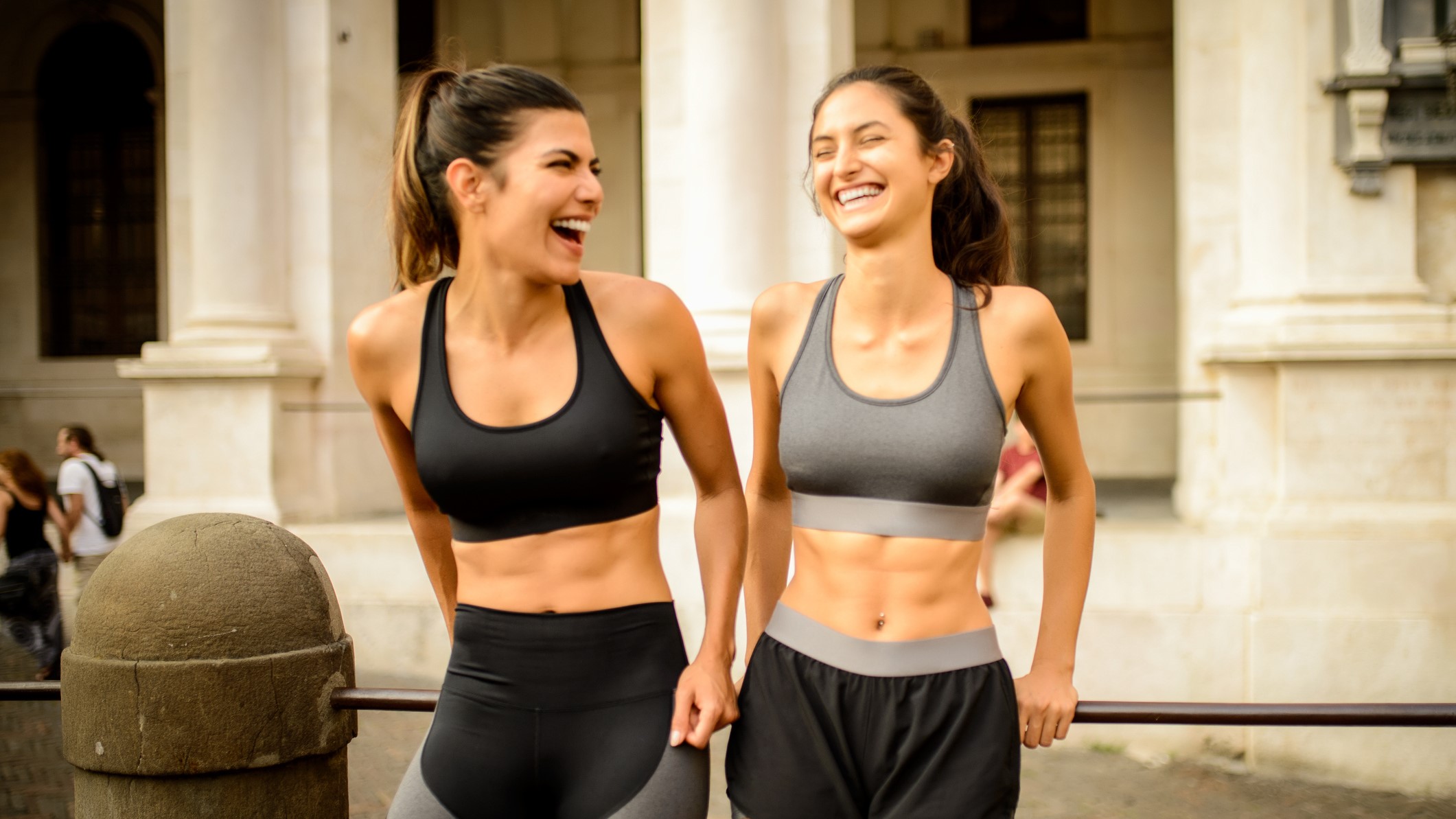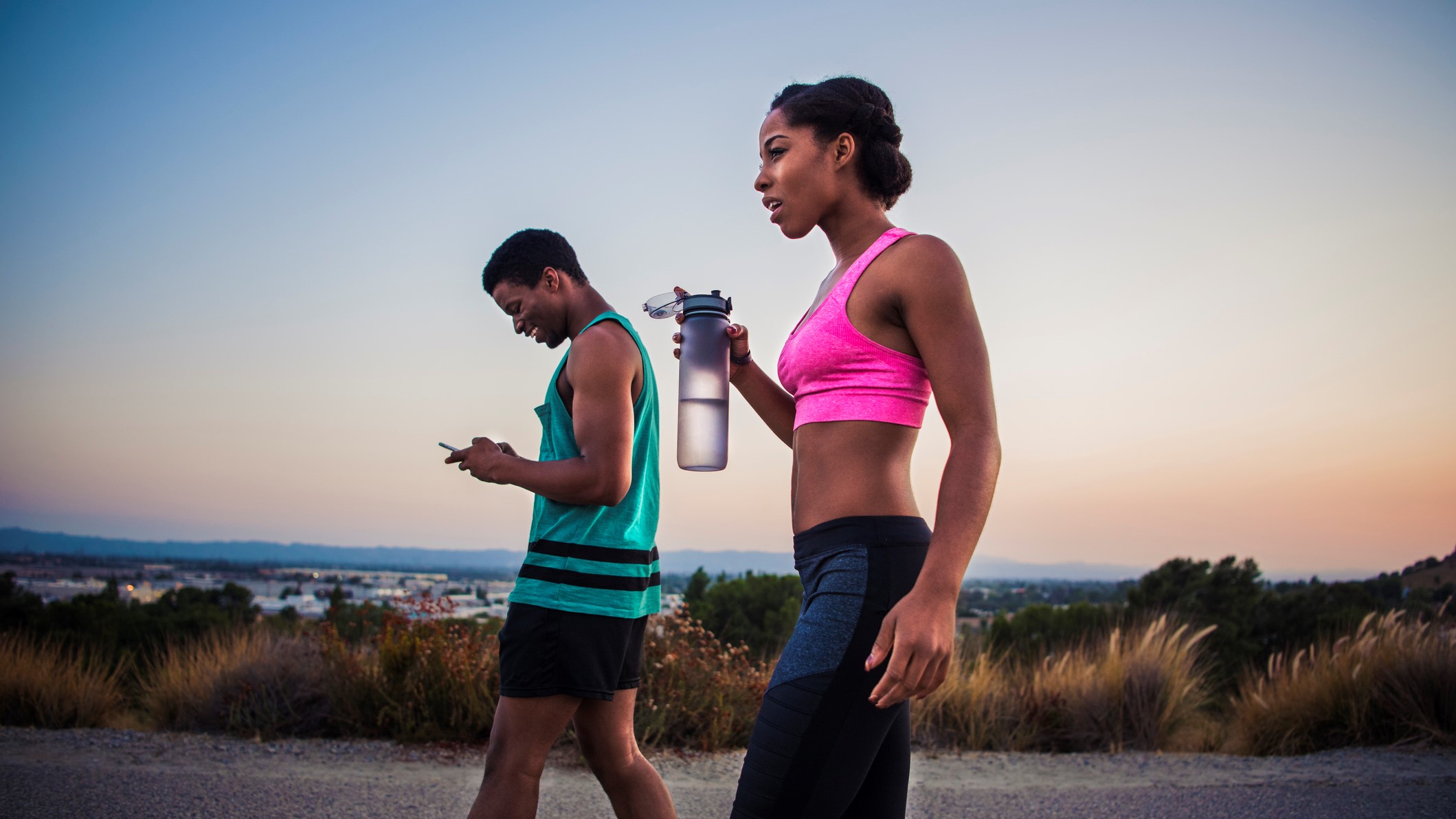Can walking give you abs? We ask an expert

Walking is an excellent way to get fitter, tone up, and lose weight — it’s suitable for beginners, you don’t need any extra equipment, and it’s completely free! Whether you’re looking to add more steps into your daily routine, or you’ve been inspired by TikTok’s Hot Girl Walk trend or 12-3-30 workouts, you might be wondering what the benefits are of increasing your step count, and whether walking more might help you sculpt abs. Read on to find out more.
The first thing to note is that there are a huge number of benefits to walking more, that aren’t about losing weight and toning up. Research has shown that spending time walking outside lowers your levels of the stress hormone cortisol, meaning you might feel less stressed if you spend more time walking outside.
You can strengthen your heart — Studies have found walking for 30 minutes per day, five days a week, may reduce your risk of coronary heart disease by 19 percent. Plus, walking is thought to boost the immune system by increasing the circulation of immune cells in the body. Here’s more on what 30 minutes of walking a day can do for your body.
If sculpting visible abs is your goal, however, you might be looking to use walking as a way to tone up and lose weight. Below, we spoke to fitness coach Natalie Hope, who leads workouts on the audio-led fitness app WithU.
Can walking give you abs?
In a word, no. “Walking alone is not a direct or intense enough form of exercise to specifically target and develop visible abs,” Hope explains. “Visible abs typically require a combination of factors, including a low body fat percentage and developed core muscles,” she adds.
If building visible ab muscles are your core, you’ll need to focus on your body fat percentage, which determines how visible your abs are. You’ll need to factor in diet, regular exercise, hormones, sleep, and stress — all contribute toward how much body fat you store. Despite what you may have read, you can’t spot-reduce belly fat, so we’d recommend reading up on how to calculate your body fat percentage and why it matters here.

That said, if you are looking to work on your ab muscles while walking, there are some tweaks you can make to your form, explains Hope. “Actively contract your abdominal muscles by pulling your belly button towards your spine. This will help stabilize your torso and engage your abs throughout the walk,” she says. “Swing your arms naturally as you walk. This not only increases calorie burn but also engages your core muscles, including the obliques.”
Get instant access to breaking news, the hottest reviews, great deals and helpful tips.
Can walking help you lose weight?
If you’re walking for weight loss, Hope has some tips: “Walking burns calories, and weight loss occurs when you consistently burn more calories than you consume. Walking at a brisk pace and undertaking a consistent fitness routine that includes a combination of cardiovascular exercise, strength training, and a healthy diet can help increase your calorie expenditure and contribute to weight loss.”
Walking is also a great way to strengthen and tone your leg muscles, Hope points out. If you are looking to increase your pace, and take on harder hikes, it’s a good idea to invest in the right equipment. Check out the best hiking boots here, as well as these Skechers Go Walk shoes our fitness editor walked 100 miles in. If you are tracking your steps and calorie burn, buying one of the best fitness trackers can help.

How can you increase the calorie burn of your walking workouts?
If you are looking to up the calorie burn of your daily walk, Hope says setting yourself a goal can help you up the ante — “determine the duration, distance, or step count you aim to achieve during each walking session,” explains Hope.
“Aim for longer walks as your fitness improves,” she adds. “Start with a duration that feels challenging but manageable, and gradually increase the time spent walking. Work your way up to at least 30 minutes per session, or more if possible.”
It’s also worth increasing your pace to up the intensity. “A brisk pace means walking fast enough to elevate your heart rate and break a sweat,” says Hope. Why not mix things up by trying one of the best walking workouts?
More from Tom's Guide
- The best walking workouts to add to your routine
- How to lose weight and get in shape by walking
- I did the 12-3-30 treadmill workout for a month — here's my results

Jane McGuire is Tom's Guide's Fitness editor, which means she looks after everything fitness related - from running gear to yoga mats. An avid runner, Jane has tested and reviewed fitness products for the past five years, so knows what to look for when finding a good running watch or a pair of shorts with pockets big enough for your smartphone. When she's not pounding the pavements, you'll find Jane striding round the Surrey Hills, taking far too many photos of her puppy.
